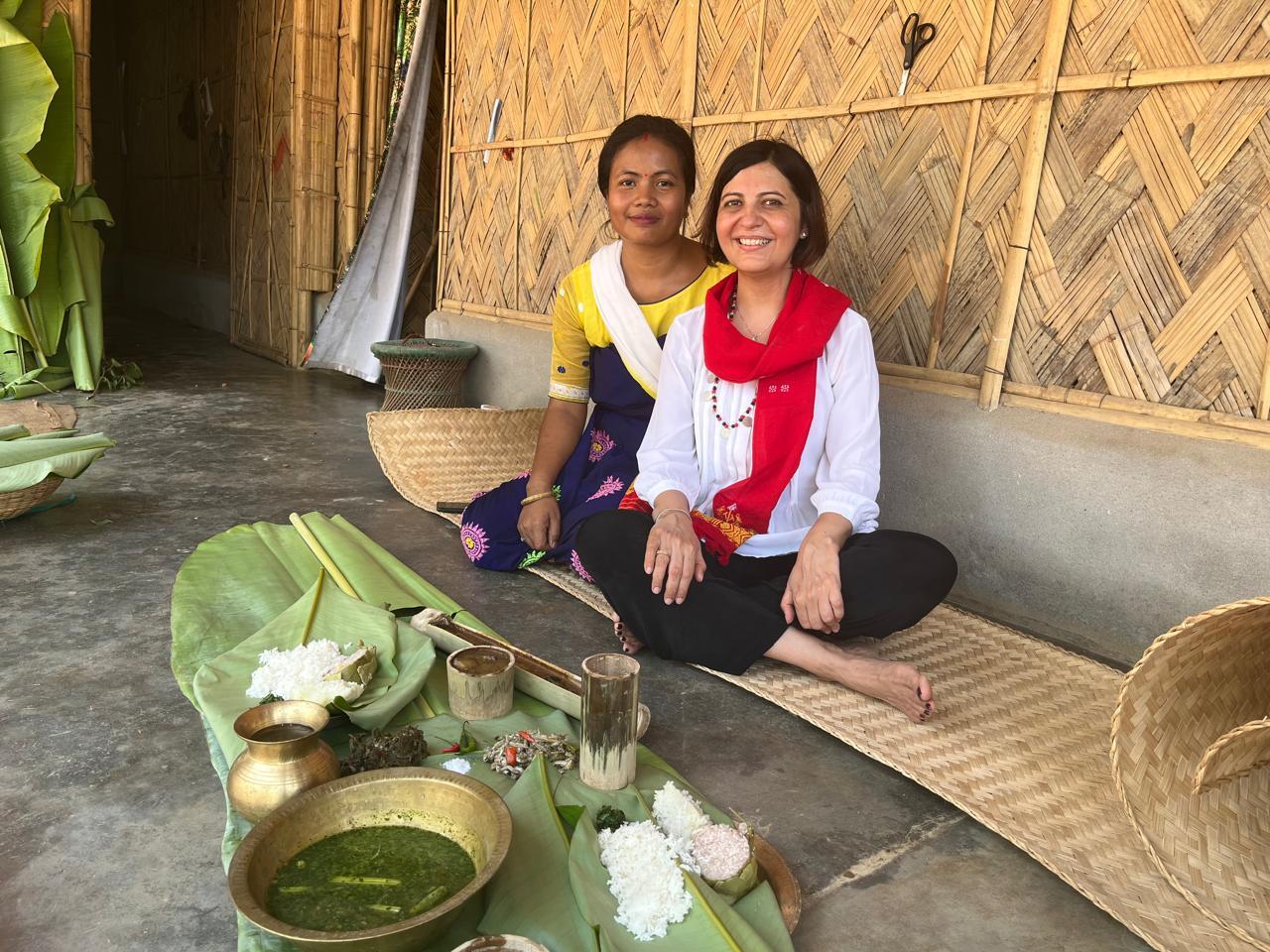
An Invitation to Remember: Smoky Surprise from the Northeast
In An Invitation to Feast: A Deep Dive into India’s Culinary Treasures, Bahadur chronicles her journey across India through eleven iconic dishes, each representing a slice of the country’s vast and nuanced food heritage. From biryani to dosai, butter chicken to chhole, vada pav to rasgulla, this book is part recipe compendium, part culinary memoir, and entirely a celebration of India’s edible identity.

When acclaimed food journalist and writer Sona Bahadur set out to write An Invitation to Feast, published by Aleph, she didn’t plan on falling in love with pork. Especially not the kind found sizzling in the bamboo-smoked hearths of Nagaland, or slowly cooking in a home kitchen in Meghalaya, where it’s simmered with roasted and pounded black sesame that releases its deep, nutty oils into the dish, flavouring it from within. Or the chunky smoked pieces in Assam, cooked slowly with lai haak (mustard greens), until the fat melts and the greens soak up the essence of the meat. In fact, she admits she wasn’t even a pork eater in that sense. Not for religious or dietary reasons, but simply because:
“There was nowhere I could find such juicy, clean, heirloom pork like what I tasted in Northeast India,” she says.

That changed everything.
In An Invitation to Feast: A Deep Dive into India’s Culinary Treasures, Bahadur chronicles her journey across India through eleven iconic dishes, each representing a slice of the country’s vast and nuanced food heritage. From biryani to dosai, butter chicken to chhole, vada pav to rasgulla, this book is part recipe compendium, part culinary memoir, and entirely a celebration of India’s edible identity.
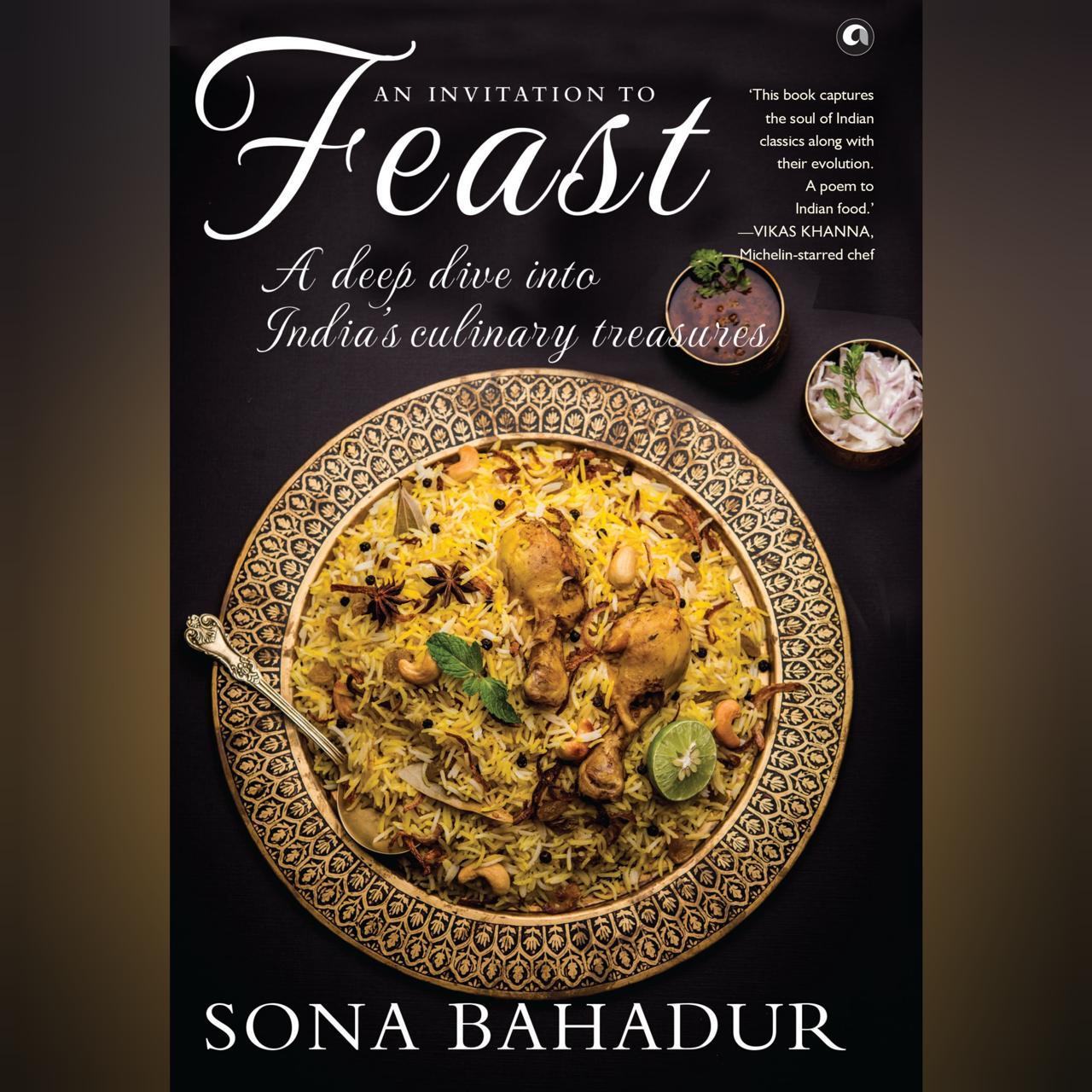
But perhaps the most quietly powerful moment in the book is her choice to include smoked pork from the Northeast, a decision that may surprise some readers, but represents something long overdue.
A Smoked Statement: The Northeast Finally Takes Its Place
The Northeastern states of India: Nagaland, Meghalaya, Assam, Mizoram, Arunachal Pradesh, Tripura and Sikkim are incredibly rich in culinary tradition, though their cuisines have rarely found space in mainstream food writing. Their dishes are rooted not in heavy-handed spices but in wild herbs, foraged greens, fermented ingredients, and hyper-local produce. The food is organic, earthy, and deeply flavourful, drawing from ancient, ecologically harmonious practices.
And yet, despite this diversity and depth, Northeast Indian food has long lacked national “recall value.” It hasn’t been marketed, mainstreamed, or made “trendy” in the way butter chicken or biryani have. That’s exactly what makes Bahadur’s choice so meaningful.
By giving smoked pork its rightful place among India's most iconic dishes, Bahadur does something more than highlight a recipe, she shifts the lens. This isn’t just about a dish being recognized. It’s about an entire region being acknowledged.
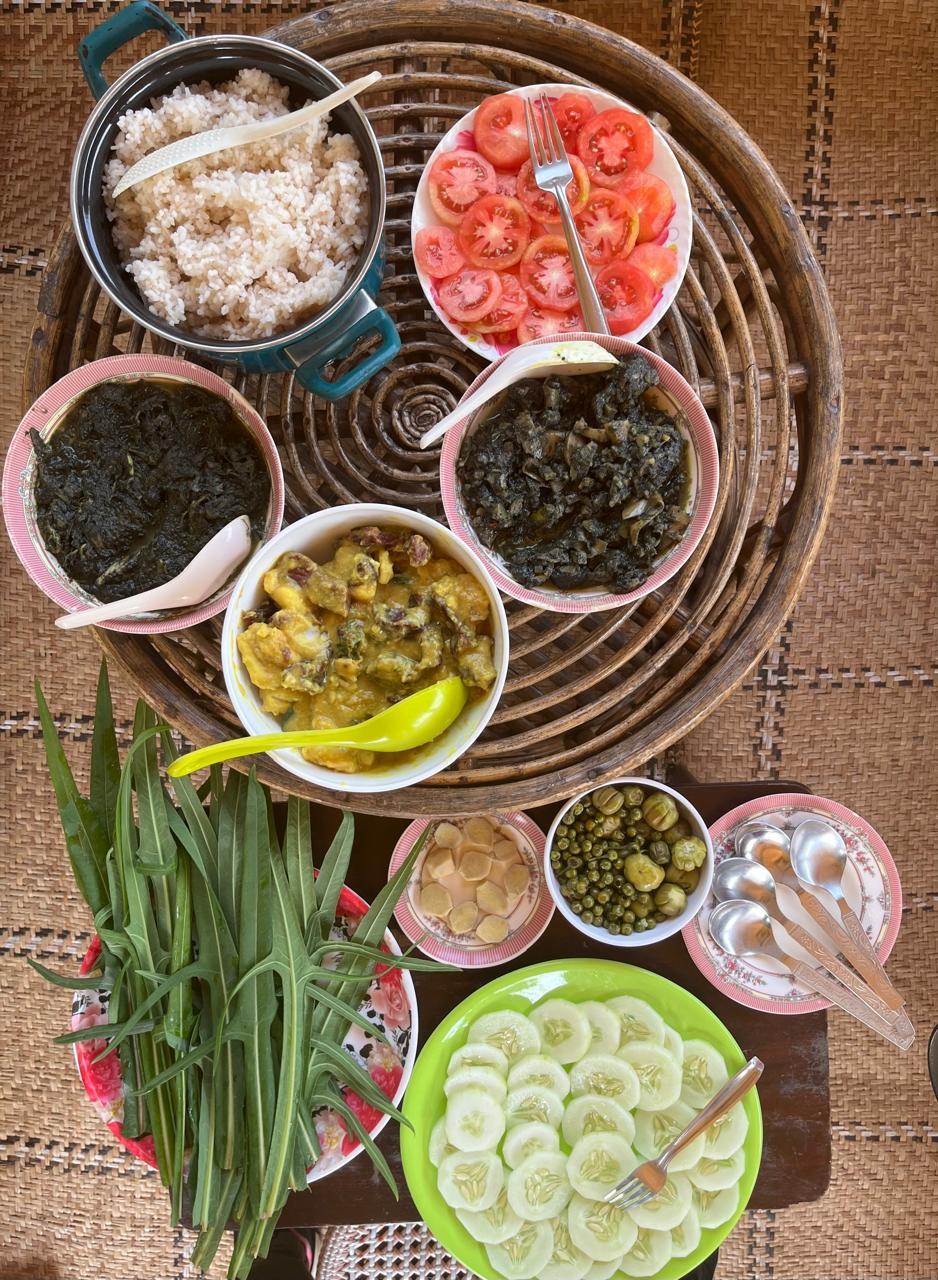
I would say, now that smoked pork has made it here, claiming its place of pride, the region itself, in some small but meaningful way, has made it too.
It’s a dish, yes, but also a symbol. A symbol of inclusion, of culinary equity, and of the untold richness that still waits to be discovered in the kitchens of the Northeast.
Smoked Pork: A Bold and Beautiful Inclusion
In a country where pork consumption remains niche and often misunderstood, Bahadur’s inclusion of smoked pork alongside culinary giants like butter chicken and biryani is quietly radical. In 2024 alone, over 317,000 metric tons of pork were consumed across India, according to Statista, with the majority of this consumption concentrated in states like Nagaland, Assam, Manipur, Meghalaya, Bihar, Goa, Kerala, and West Bengal. Yet, the per capita pork consumption remains low, held back by religious restrictions, social perceptions, and concerns about the cleanliness of domestically produced pork, especially given the common association of pigs as natural scavengers. These factors continue to limit the growth of pork consumption in much of India.
But in the homes Bahadur visited in some of the states of Northeast, pork wasn’t taboo it was treasured.

From fermentation to smoking on bamboo racks, from pepper rubs to dried lemon leaves, pork preparation in the Northeast is a time-honoured practice handed down through generations. Bahadur captures this beautifully in the chapter titled “Baptism by Smoke.” It’s not just a dish she’s tasting, it’s a tradition she’s entering.
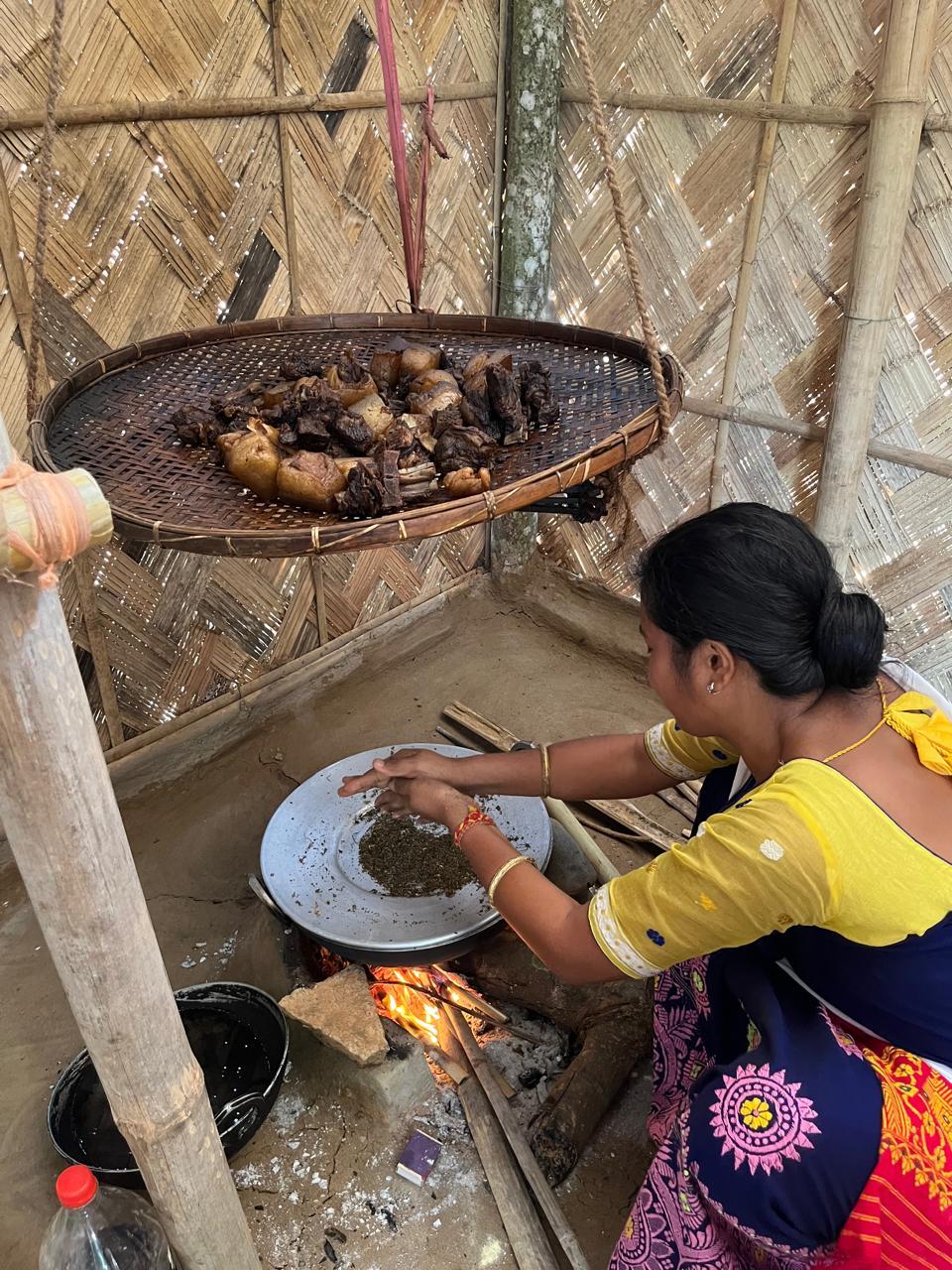
“I definitely got hooked,” she says. “There’s something unforgettable about the pork I had in people’s homes—it was tender, rich, and deeply flavourful. These pigs are locally reared, fed well, and respected. It was nothing like the pork you’d find in most markets elsewhere in India.”
Her journey from a non-pork eater to an ardent admirer of heirloom pork echoes a larger truth: food, when approached with curiosity and humility, can reshape both palates and perspectives.
Beyond the Recipe: A Living Culinary History
What elevates An Invitation to Feast is Bahadur’s unique ability to mix rigorous journalism with heartfelt storytelling. Her recipes are precise, her research meticulous, and yet her tone remains intimate, often playful. She draws upon the wisdom of chefs, home cooks, mentors, and food historians, building each chapter as a layered narrative where ingredients are never just ingredients, but metaphors for migration, memory, and meaning.
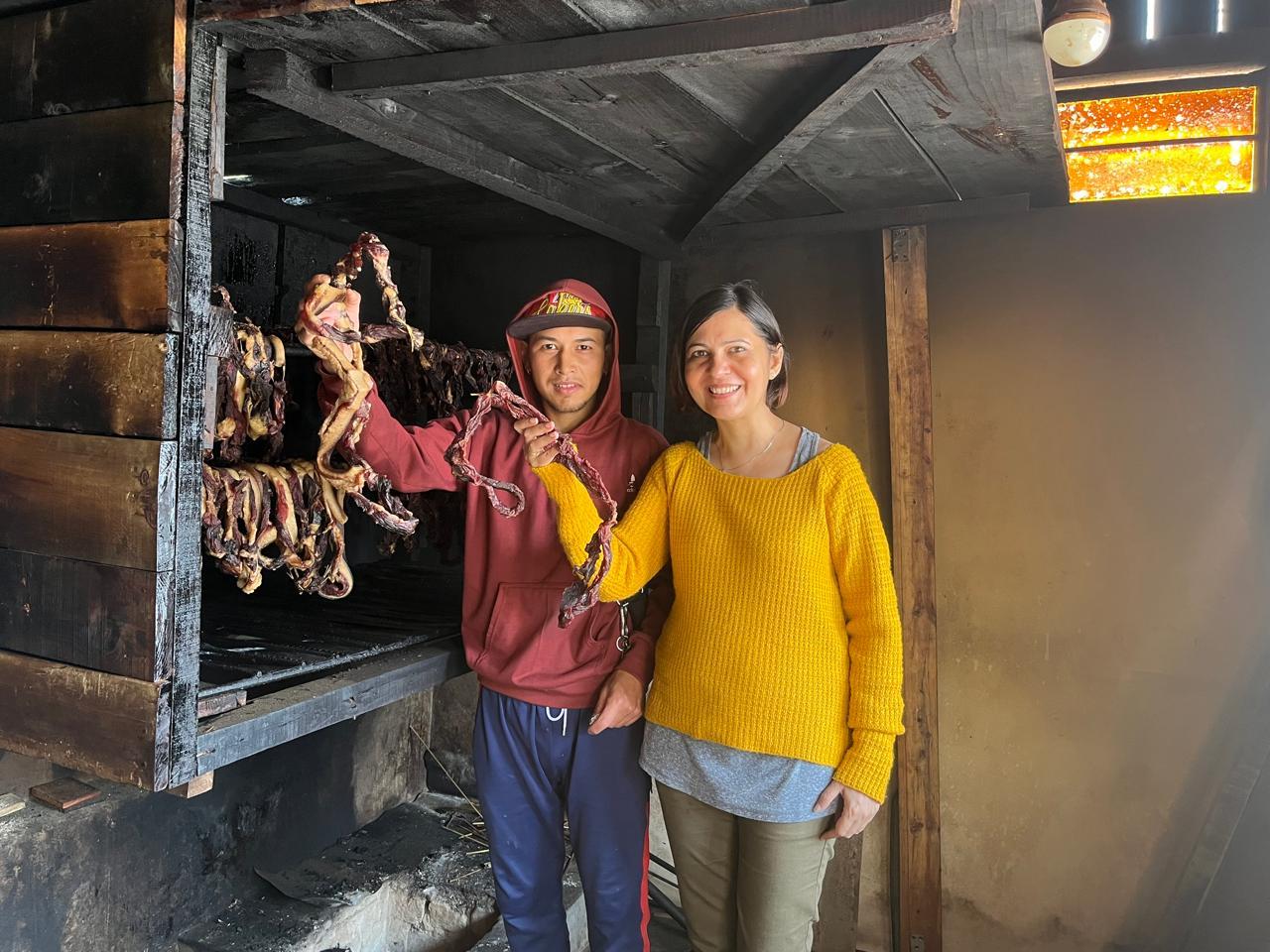
“Preserving our culinary heritage entails not just documenting recipes but celebrating our stories and memories as well,” Bahadur writes.
Nowhere is that mission more alive than in her exploration of smoked pork.
A Seat at the Table
In a lineup featuring heavy-hitters like biryani, dosai, vada pav, shami kebabs, rasgulla, smoked pork doesn’t just hold its own. It elevates the entire conversation. It challenges the longstanding assumptions about which dishes are “Indian enough” to be considered iconic. And more importantly, it reminds us that food writing must go beyond metros and menus. It must sit in kitchens, listen to elders, and taste the smoke.
For anyone from the Northeast, seeing smoked pork given pride of place among India’s culinary legends is deeply validating. For the rest of India, it’s an invitation to look East—not just with curiosity, but with respect.
Final Bite
Sona Bahadur may not have been a pork eater when she began this journey, but An Invitation to Feast is a book that transforms not just the writer, but the reader too. It’s a celebration of food that honours the unsung, uplifts the overlooked, and brings to the table those whose stories have simmered too long in silence.
With this thoughtful, bold, and utterly delicious book, Bahadur redefines what it means to be iconic in Indian cuisine. And in doing so, she adds a few more seats at the table especially for those who’ve always been feasting, but rarely featured.

Copyright©2025 Living Media India Limited. For reprint rights: Syndications Today









